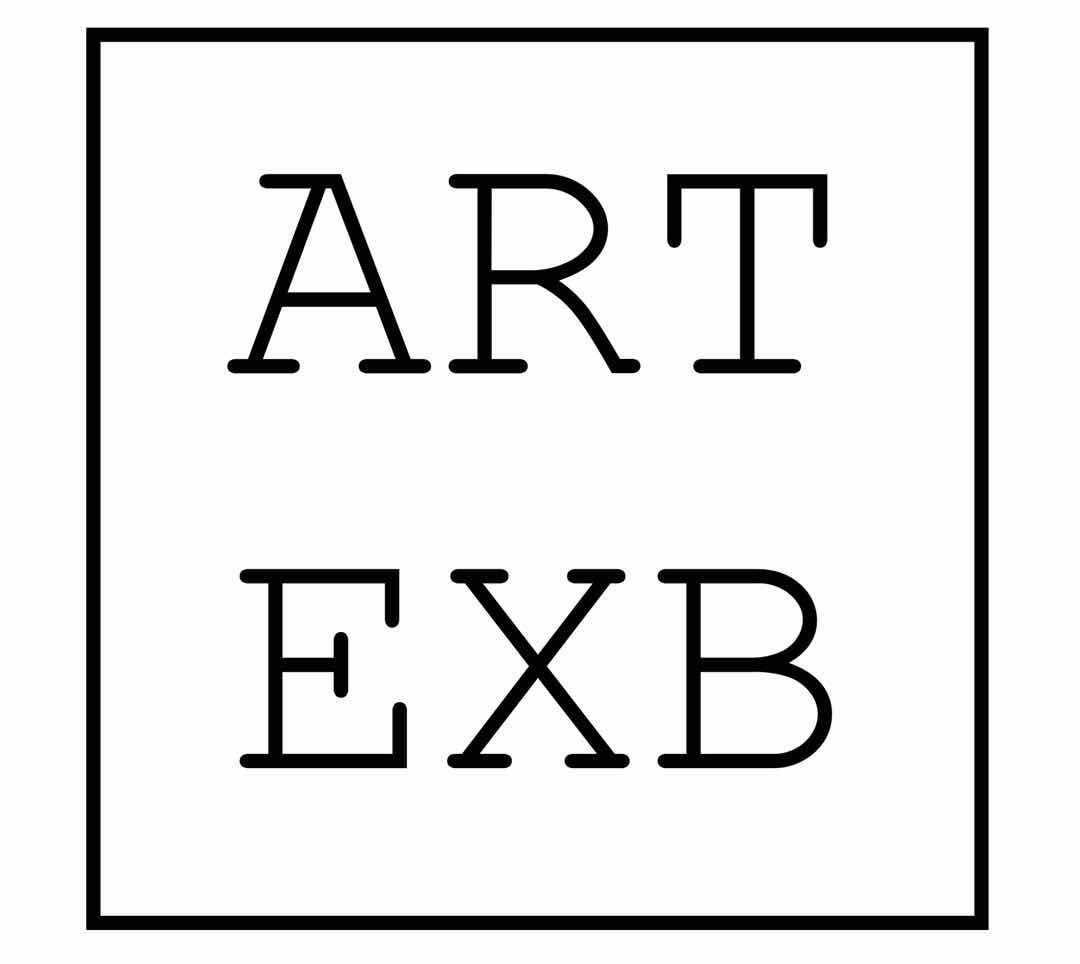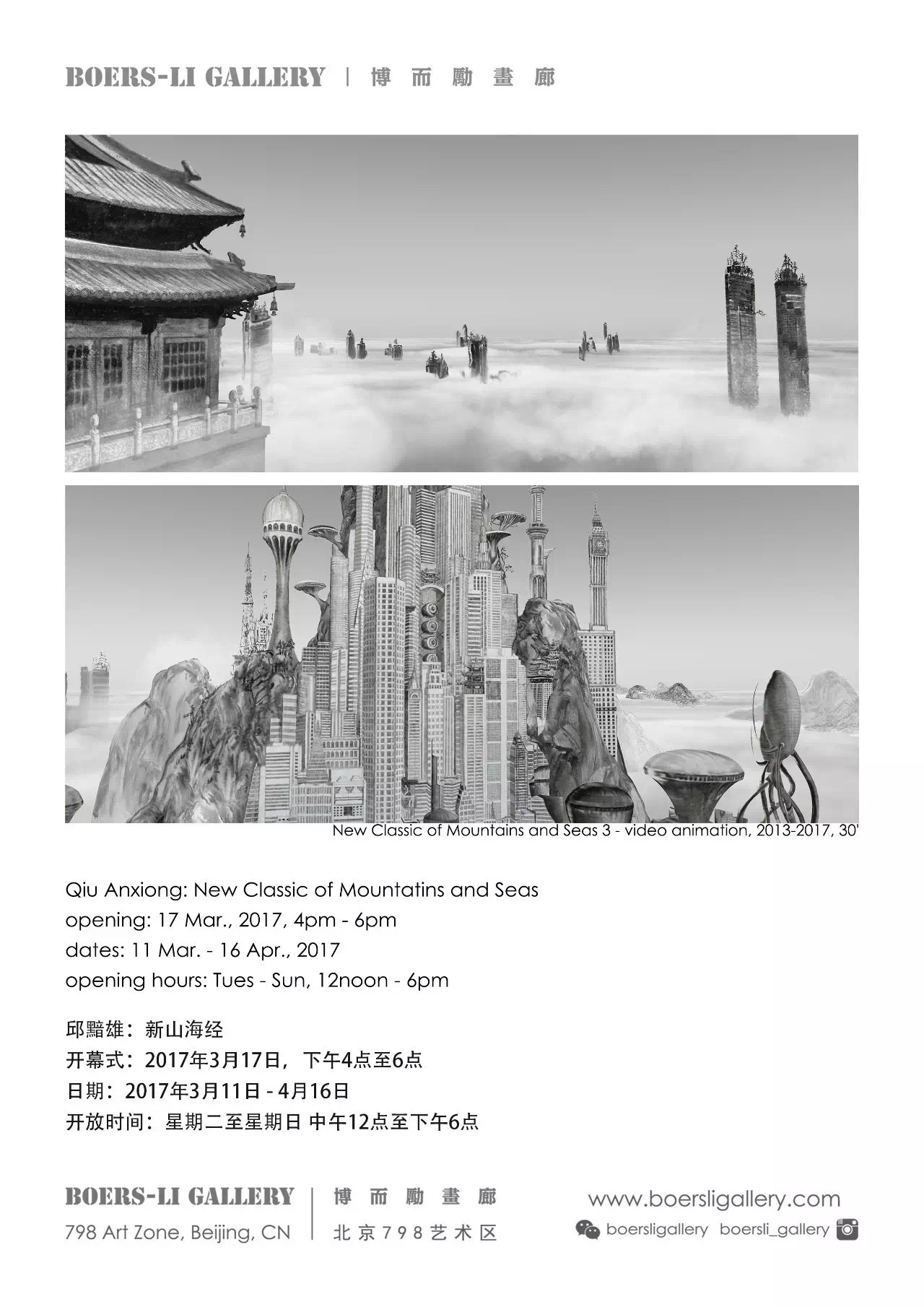Boers-Li Gallery is very pleased to announce Qiu Anxiong’s solo exhibition, “New Classic of Mountains and Seas III”, opening on the 11th of March, 2017. This is Qiu Anxiong’s 4th solo show in the gallery, after his widely discussed “train” project “Staring into Amnesia” in 2007, “About-New Book of Mountains and Seas II” two years thereafter, and “Zoo” in 2010. This upcoming exhibition marks the final episode of Qiu’s animation trilogy, inspired by the classical Chinese text, “Shan Hai Jing” (Classics of Mountains and Seas). This final episode will be shown on a wide-screened 3D-video with a number of related works and source material, such as paintings, scrolls, drawings and notes.
Qiu Anxiong is known as an active and engaging artist. In his works, he seeks to reconcile the mankind’s disregard for cultivating value of history, with the imperative of what could be a disputable evolutionary progress. Since 2004, the “New Classic of Mountains and Seas” series has been focusing on key sociological and political events such as, environmental degradation, the depletion of natural resources and the impact of imperialism etc. To articulate these poignant messages through art, Qiu integrates traditional painting style of ink-wash to the technologically advanced medium of video animation.
At the same time, Qiu’s work is inclined to the strange and the absurd – rather than investigating into the meaninglessness and pointlessness of the world, the artists proposes ways in which we may engage with a world evolving at unprecedented speed and whose course of development has become incomprehensible to us. Qiu Anxiong’s reiteration chronicles a world rapidly succumbing to industrial development, social change and environment destruction, a world where ideological differences lead inevitably to conflict and war. With references to the Classic of Mountains and Seas, an ancient Chinese text comprised of stories of magic and myths, the video series unfurls in the primitive setting of modern civilization. In viewing the global political landscape from an immemorial perspective, the work translates those ignored phenomena into mythical materials observed at distance, and presents the audience with scenes from “another world”. The film series expands the possibilities of ink painting into the language system of contemporary art by integrating various traditional Chinese painting techniques such as gongbi, xieyi, baimiao and etc, expressionistic into the hand-drawn animation film-making processes, to allow for a critical voice on the real world with vivid and peculiar images.
With the conflict over energy resources as its main clue, the “New Classics of Mountains and Seas I” showcases how modern industrial civilization has alienated mankind and the resulting conflicts over geopolitical interests. “The New Classics of Mountains and Seas II”, drawing inspiration from biotechnology and space technology, visualizes human crises caused by the development sin sciences and technologies on both macro and micro scales. As for the“New Classics of Mountains and Seas III”, it presents the challenges of a increasingly digitally networked society of information in the contemporary by projecting this reality onto the future: in a wasteland-like city surrounded by virtual hologram images, everyone is playing dual roles — one virtual, and the other, real; as their virtual lives become increasingly confused with the real ones, people obsess fanatically over those self-generated virtual joys and fantasies, and become tedious work machines in their real lives; eventually, the virtual world is challenged by the disturbing discontinuities and incompatibilities with the real world. By portraying the intertwined and contradictory relationship between the virtual and real worlds, the film proposes a paradox of human existence in today’s society.

